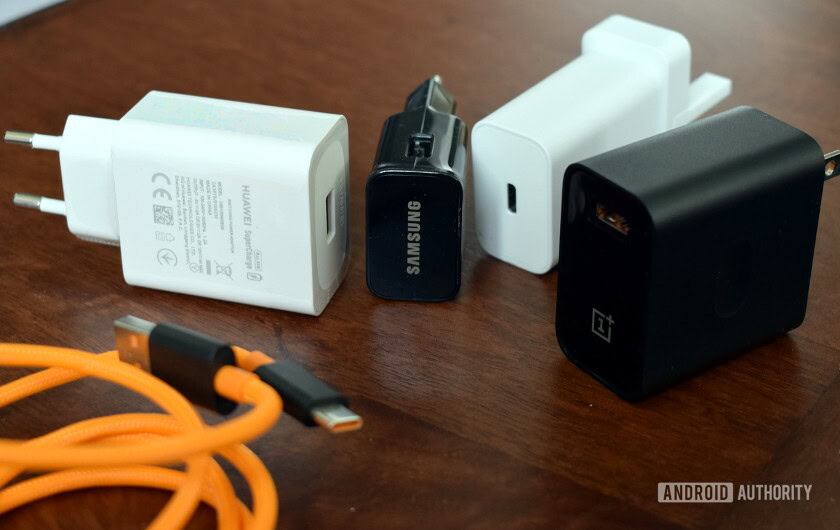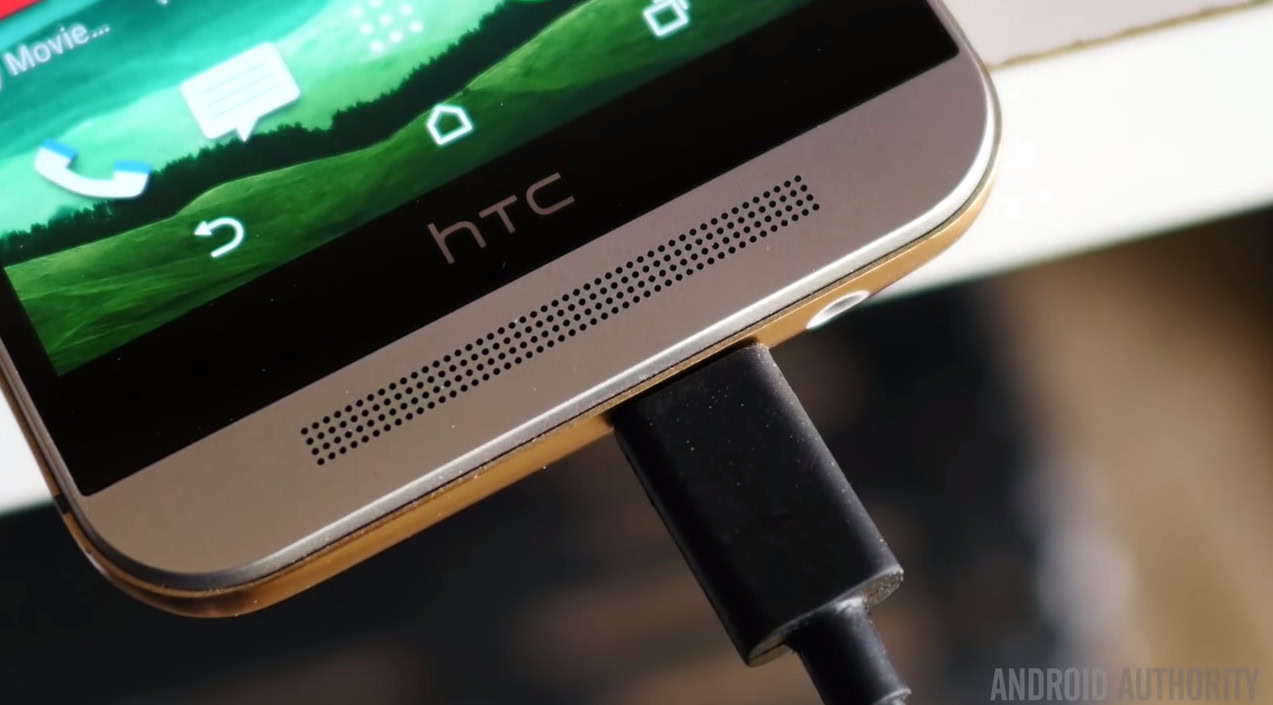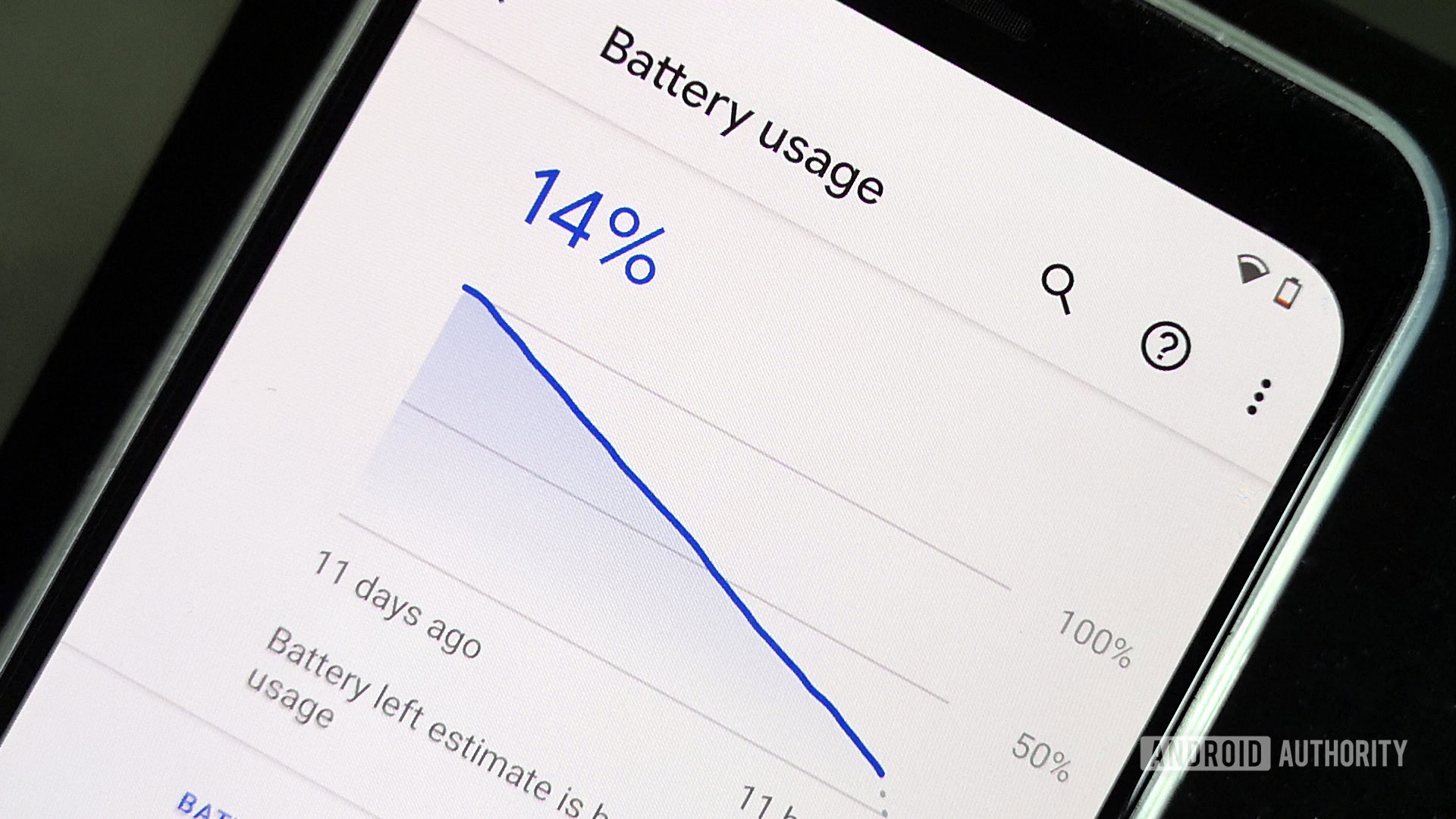Affiliate links on Android Authority may earn us a commission. Learn more.
The case against bundled phone chargers

Rumors abound that Apple and Samsung are preparing to sell their next-gen premium smartphones without a charger in the box. At face value, $1,000+ flagships sold without a charger is pretty unthinkable. Just another example on an industry charging more for less (RIP, headphone jack) and ripping us consumers off.
However, I’ve come around to a different way of thinking. At least, providing manufacturers meet a few conditions first. No in-box chargers might actually be a good thing.
Just hear me out before flaming the comments.
We asked, you told us: You hate the idea of Apple dropping the in-box charger
We’ve been here before, back when a plug was a plug
Before diving into the case against bundled phone chargers, it’s worth remembering that selling phones without a charger isn’t a brand-new concept.
Several years ago, it wasn’t uncommon for mid-range handsets to ship without a USB plug. In fact, UK’s O2 network and HTCteamed up back in 2013 to sell the HTC One flagship without a charger. At the time, O2 claimed that 70% of customers buying a new phone already have the relevant charger. 82% of customers bought a phone without a charger during its six-month trial, so it wasn’t an unpopular initiative. Today, even some Amazon Kindle tablets only ship with USB cables, not chargers, because basically any standard 2.5W USB plug is enough to power them up.
This idea was fine back in the days when a charger was a charger and everything was cross-compatible. It’s much more complicated in today’s market filled with different fast-charging and proprietary standards. Fortunately, there’s a road leading back to the ubiquitous charging superhighway.

Forget proprietary charging, let’s all use USB Power Delivery
If you’re anything like me, you probably have a drawer full of old USB chargers from bygone mobile generations. The primary reason we’re compelled to switch chargers with a new phone is that the new plug is the fastest way to charge up. Proprietary charging standards used by a wide range of manufacturers simply don’t play nicely with other handsets, and sometimes aren’t completely backward-compatible either. It’s one of the big reasons USB-C is just a confusing mess.
Fortunately, nearly all recent smartphones play nicely with USB Power Delivery (USB PD), even if it’s not the fastest way to charge up every handset. USB PD is a great backup option in the worst-case scenario, but it’s the fast-charging method of choice for Google, Nokia, Samsung, and a few others too. As long as Samsung, and anyone else who ditches the in-box charger, supports USB-C and USB Power Delivery correctly, we’ll very quickly enter a blissful world with a ubiquitous charging standard. That includes mid-tier and affordable devices too.
As long as Samsung et al. support USB Power Delivery correctly, we don't need in-box chargers anymore.
That’s pretty good for us consumers too, as it means we can buy a single charging brick that caters to multiple devices, often at once. This includes many of the latest laptops and other gadgets that increasingly support USB Power Delivery. I actually have such a brick as my lounge charger and I rarely reach for proprietary plugs anymore.
This requires a change from Apple too, of course. A company stubbornly attached to the Lightning connector for iPhones, despite ditching the port in favor of USB-C for iPads. Still, the latest iPhones already support USB Power Delivery, just over a Lightning connector, rather than USB-C. So they’re already compatible with a wide range of products on the market, via an adapter.
It’s actually companies with proprietary charging tech, like OPPO, OnePlus, and HUAWEI, who will be holdouts to this united way of thinking. They’ve invested heavily in technology that’s faster than USB Power Delivery, making them marketable product differentiators. HUAWEI and OPPO, in particular, ship phones in big numbers, so it’s unlikely we’ll see the broader industry stop providing boxed chargers anytime soon. That said, many handsets from these brands support USB PD too, so you aren’t trapped with their proprietary technology. This should mean companies can’t ditch in-box chargers simply to increase profits, at least without ditching USB PD too.
If wires aren’t your thing, wireless charging also aims to solve a similar problem too, don’t forget.
All aboard the eco-train
I tend to view green fads with a healthy dose of skepticism, but it’s a well-documented fact that a hefty portion of electronic waste takes the form of old chargers. Outdated plugs produce an estimated 51,000 metric tons of waste every year in the European Union alone. This is partly why EU lawmakers voted in favor of legislating for a single charging standard earlier in 2020. You perhaps won’t be surprised to learn that Apple initially lobbied against the idea.
Circling back, waste was also the driving force behind O2’s 2013 initiative. The carrier’s research suggested there were as many as 100 million unused chargers in the UK. Weighing a total of 18,700 tonnes, wasting 124,274 miles of copper wire and plastic covers, and the equivalent volume of four Olympic swimming pools worth of garbage. Remember, that was in one country, seven years ago!
You don't have to be an eco-warrior to be sick of owning 101 different chargers.
Cutting down on that waste, much of it containing precious metals and other finite resources, is an easy win, given that there’s a perfectly suitable solution already available in the industry. With that in mind, legislation shouldn’t be necessary, if only manufacturers could get on the same consumer-friendly page, for once.
Going green is a pretty low-hanging fruit for their marketing departments too, so what’s the hold-up? They surely can’t let Samsung hog the limelight with its marketing for greener chargers.

Long-term benefits outweigh any teething issues
There’s only one downside to the industry moving away from in-box chargers towards leaving customers to pick up their own USB Power Delivery products. Some consumers might not already have a USB PD charger to hand, particularly if they haven’t bought a flagship in the past few years. But even this isn’t too much of an issue.
First, remember that USB is backward compatible. New phones will charge (albeit slowly) with any old USB adapter you have lying around. You might even get half-decent speeds out of an old Quick Charge plug, USB 3.0 port, or an adapter from another phone manufacturer. So it’s not a hopeless situation even in the worst case.
Secondly, USB Power Delivery plugs and other accessories aren’t expensive anymore. You don’t need a 100W laptop-class USB PD brick for smartphones. You can pick up 18W fast-charging plugs from reputable manufacturers for under $20. 40W to 60W multi-device chargers are affordable too, often costing under $40 for the new fancy GaN type variants. That’s really not a steep price to pay for a charger that will power all of your gadgets for years to come.
Need some suggestions? Best multi-port USB wall chargers
Of course, if handset manufacturers ditch in-box chargers to brazenly profiteer from their own proprietary accessories and standards, ignore all of the above and let me know where I can board the outrage bus. Dropping the in-box charger would, at best, shave a token amount off the price of flagship phones (think $20, not $100). So it’s not the potential for or lack of savings that should concern consumers. But what would certainly be outrageous is manufacturers removing universal charing support and then selling proprietary plugs as accessories. However, this seems highly unlikely given the already broad adoption of and broader industry push towards USB Power Delivery.
Okay, you’ve heard me out, so are you ready to ditch boxed chargers and embrace a universal standard?